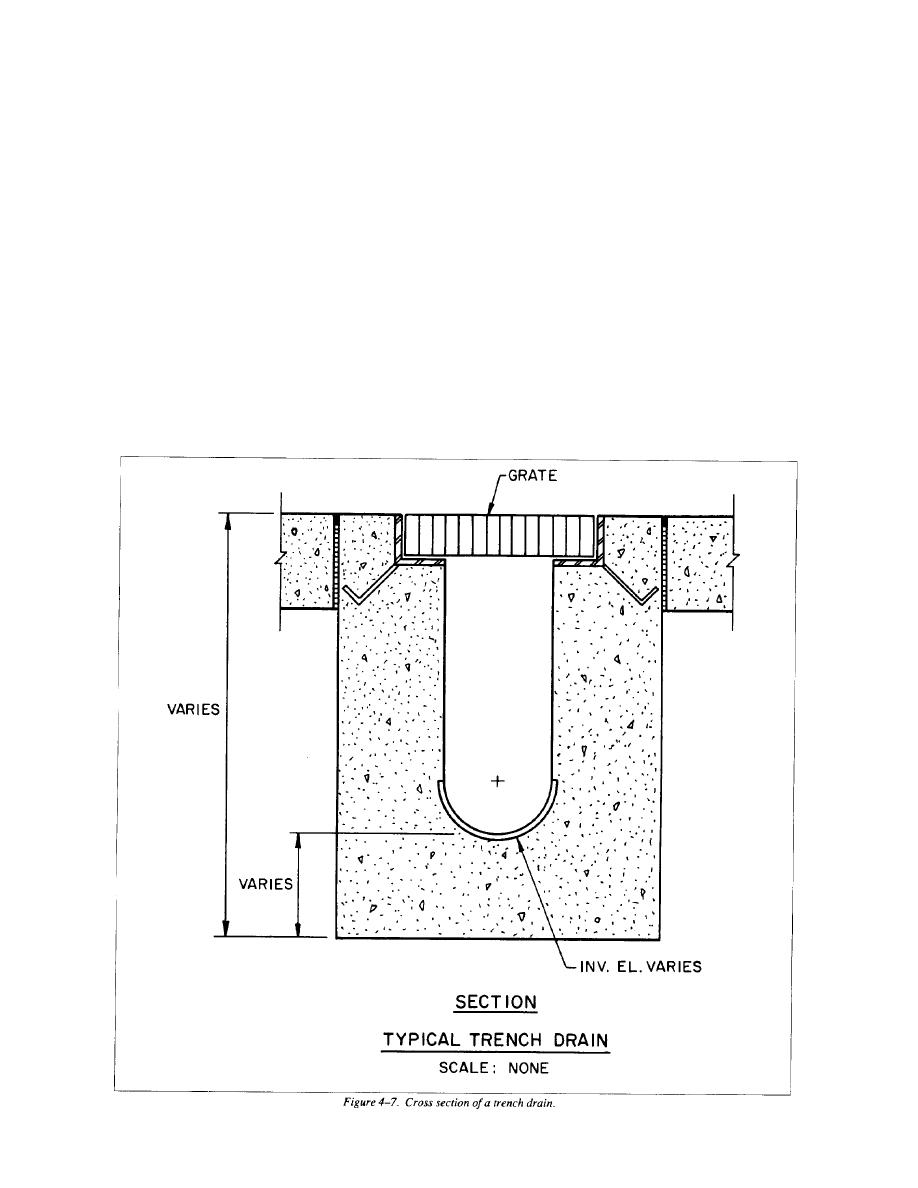
TM 5-814-9
debris can accumulate. Gravity pipe systems usually
use the facility. Concrete should be used around critical
are reinforced concrete, steel, or ductile iron pres-
drainage structures, such as at wash stations. Roads and trails
sure piping. Plastic pipe may be used, as local
leading to motor pool areas from the wash facility shall be
practices and experience permit, except under
paved to prevent clean vehicles from be-coming soiled again.
pavements.
Roller-compacted concrete should be considered for all paving
areas except at critical drainage structures, where form-worked
4-12. Pavement
concrete should be used.
All ground surfaces within the CVWF that will support vehicle
4-13. Interior wash equipment (optional)
movement must be covered with a hard surface and curbing for
water and vehicle control. Pavement is required to keep the
Low-flow, interior wash equipment should be provided at the
clean vehicles from driving and parking on surfaces where they
islands, at user request, for washing truck beds, cab floors, jeep
would become soiled. It also ensures that vehicles do not track
interiors, and other such areas. This equipment is used for
dirt from unpaved areas into places reserved for clean vehicles.
washing personnel compartments only and is not intended for
Concrete is recommended in areas of tracked vehicle
cleaning engines. Engine cleaning is prohibited at these
movement, including pavements over which both tracked and
locations. The outlet should provide a water pressure of 40 psi
wheeled vehicles will maneuver. Asphalt paving will suffice in
(2.8 atmospheres) and a flow rate of 5 (19 liters per minute). A
most areas where only wheeled vehicles will operate or in areas
3/4 inch heavy duty utility hose is attached to the outlet. A sign
of straight tracked vehicle movement. The paving and base
shall be posted warning personnel not to wash engine
should be designed to meet the needs of the vehicles that will
compartments.
4-8


 Previous Page
Previous Page
